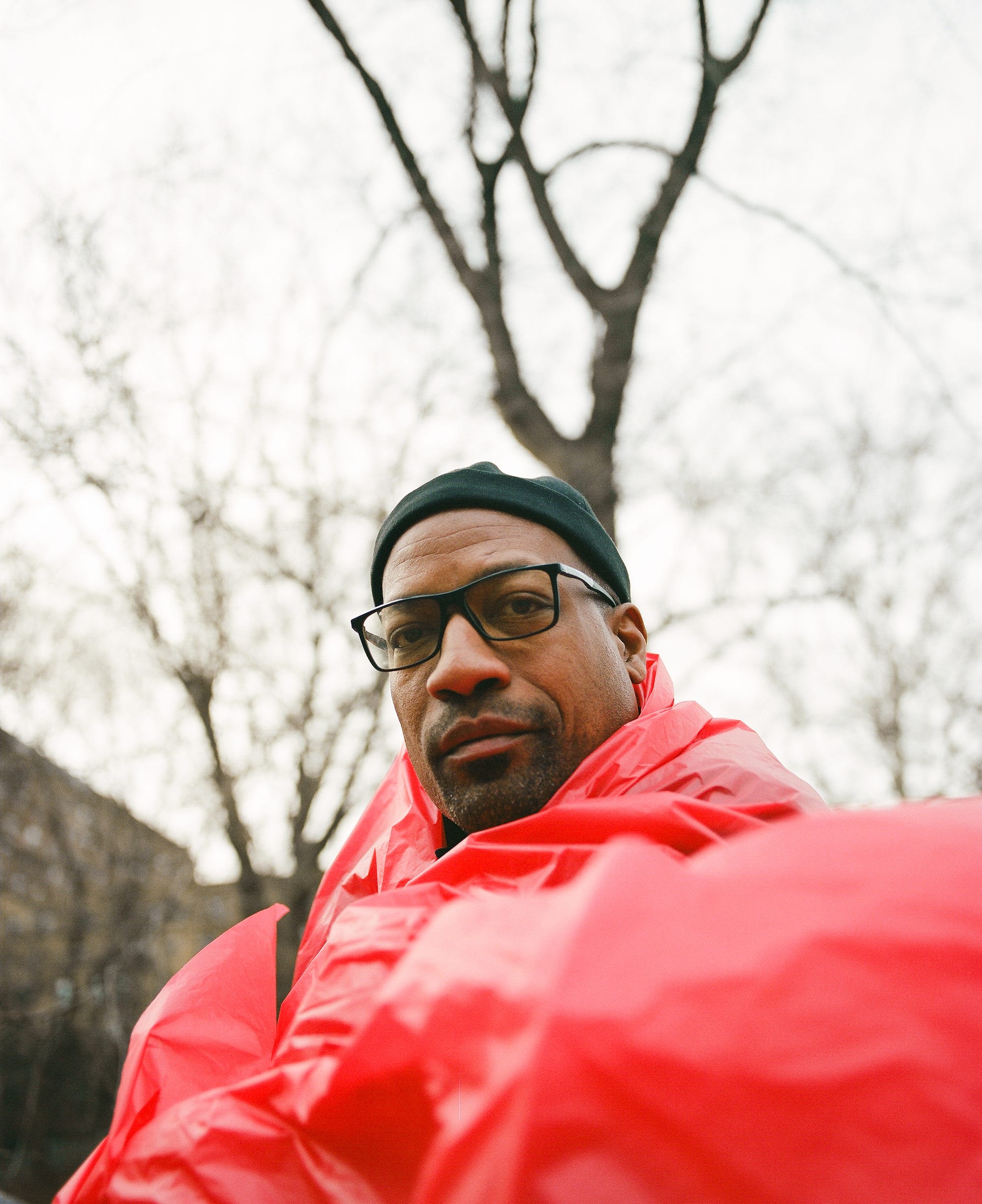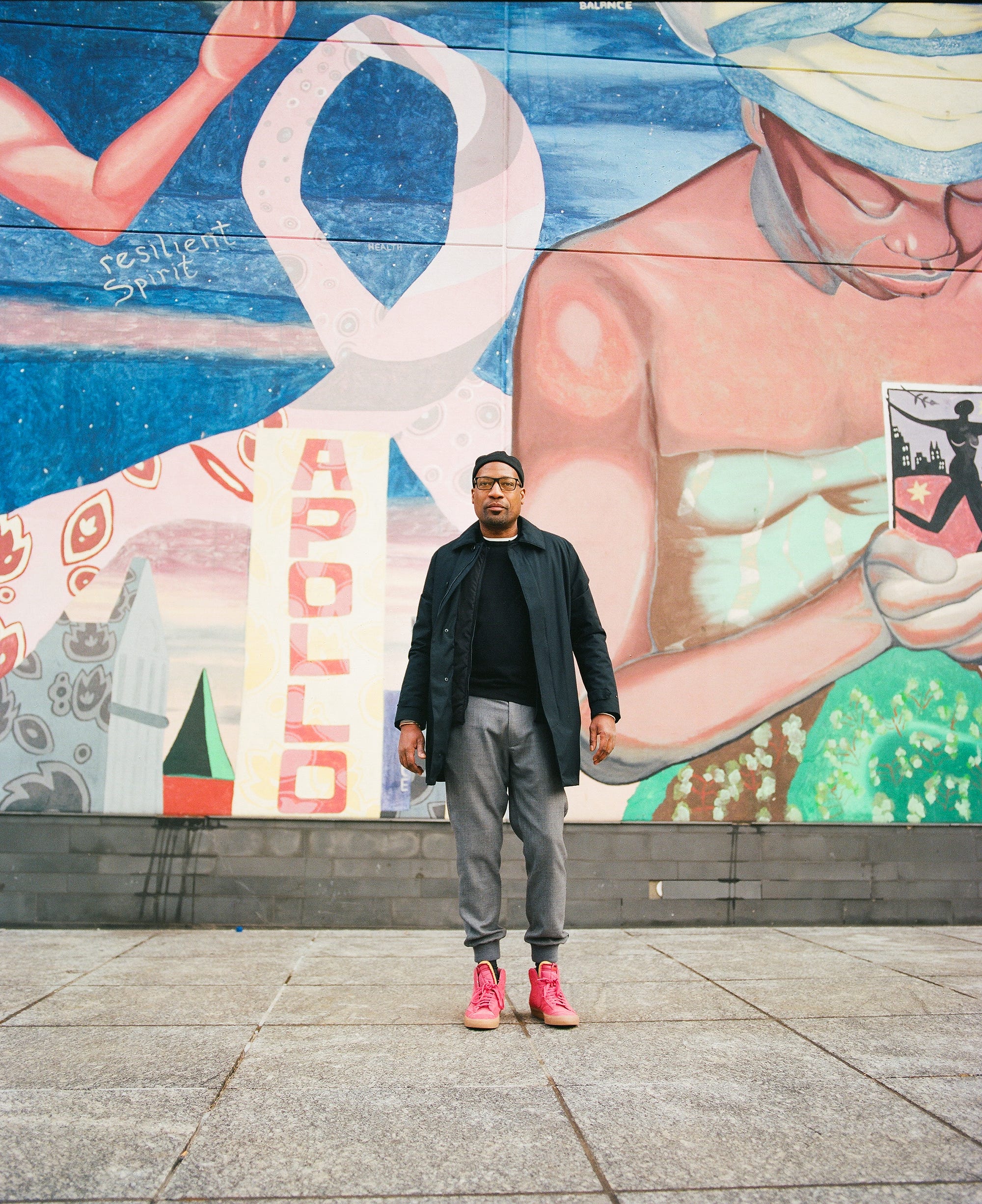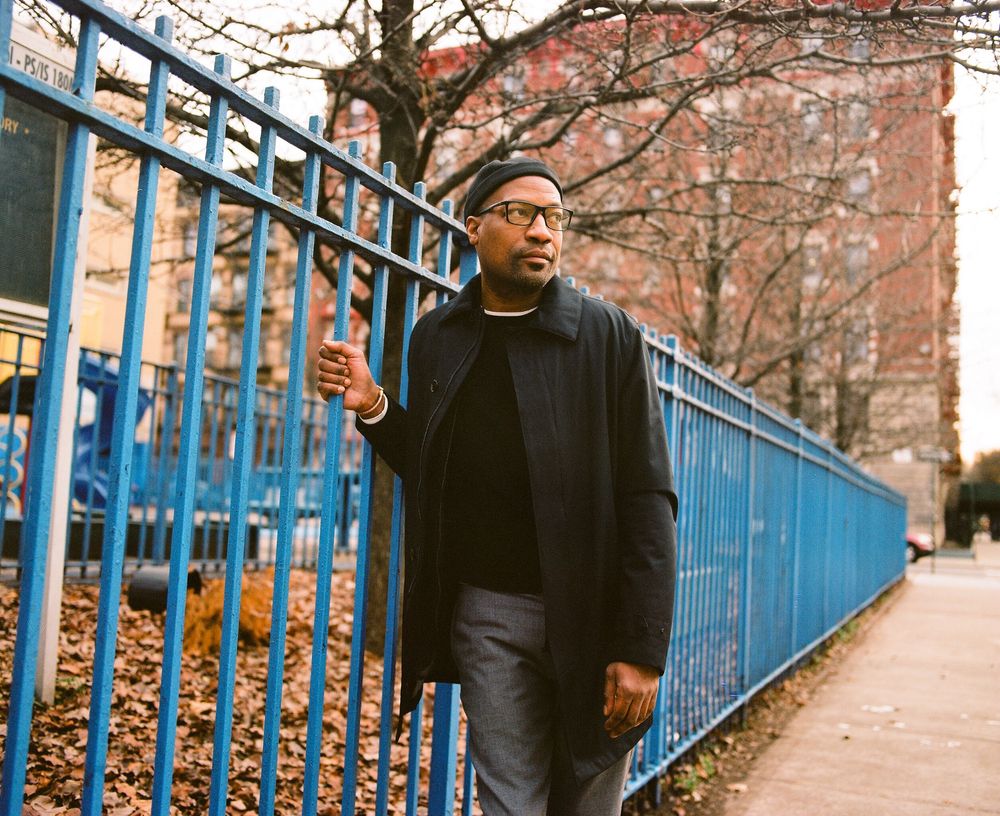The first time I met Chris, he told me he had AIDS. And I laughed out loud.
Let me explain.
We were at a brunch last year hosted by a notable Twitter/media personality. Every so often, she gathers a group of folks from various industries for food and drinks and some low-pressure networking. Not my thing, usually, but I was there as my boyfriend’s plus-one — well, one of his plus-two. He also invited his brother Chris so we could meet. Except Chris was late.
Eventually, I saw him step in, dapper and assured. He surveyed the room and then sat across from me at the table — but not without giving me the up-and-down outfit check. (I passed, I guess.) We discussed the menu, agreed on the oxtail hash, and then continued reading the room and making small talk. It was a fish-out-of-water sort of solidarity: The room skewed millennial, and everyone looked like social media stars with massively successful podcasts we’d never heard of, so we used each other as lifelines.
Somewhere between mimosas two and three, the notable Twitter/media personality urged a round of introductions — dressed up in the question “What’s been your biggest flex of 2019?” As the tidal wave of personal accomplishments rolled around the room, Chris and I made eye contact with a silent, shared question: What are you going to say? Not that we haven’t been successful in our lives, but these folks were saying things like, “I just got my second patent!” (Cue golf claps and woo-hoos.) “My Grammy shelf got a little more crowded!” (Cue more golf claps and woo-hoos.)
Chris leaned over to me.
“You know what I got?” he stage-whispered.
I shake my head.
“I got AIDS.”
His timing and delivery, that full-on eye-rolling sarcasm dripped in crushing reality, made me choke-laugh on my drink.
“I’m serious,” said Chris, a smirk playing on his face. “That’s my flex. I made it to my 30th year with AIDS. And I’m alive. And thriving.”
At that moment, I knew I loved Chris.
I also knew I wanted to know more. How do you survive AIDS for 30 years?
In April of 1980, Ken Horne was diagnosed with Kaposi sarcoma. A year later, he would be retroactively identified as the first person in the United States officially diagnosed with what would be called AIDS.
At the time that Horne was diagnosed in San Francisco, Christopher Michael Patrick Cunningham was 13 years old, living in the Bronx with his mother Cynthia, his stepfather Jimmy, and his three-year-old brother Shane. He was a straight-A student, a good kid in general. “And,” he says now, “definitely, for-sure, 100% gay.”
“A generally healthy male would have a T cell count of 600–1500. By the time Chris returned to New York City, he had exactly 57.”
When Chris makes a definitive statement, he gets a twinkle in his eye, sucks in his cheeks, raises an eyebrow, and gives a quick head nod. And that’s that.
Chris had known he was gay since he was six: crushes on boys, the whole thing. He didn’t think anything of it — until he was 14. His mother found his journal where he waxed poetic about a crush. She called him a “deviant.”
Yet, the homophobia stopped there. Out in the world, in the South Bronx of the early ’80s, Chris maintains that no one ever bullied him. “My whole crew would fuck up anybody who said anything to me.”
That crew called themselves the Cosby Kids, back when that still used to mean wholesome. While some of Chris’ friends had parents with money, he worked to get his hands on Benetton cardigans, Polo socks, and down coats from the Spiegel catalog. He was chocolate brown with a perfect blinding-white smile and sleepy, heavy-lidded eyes. He had a fake girlfriend to keep up appearances in his teen circles, even though everyone knew better. Life was about school, getting money, and having fly clothes and a good time.
Then his boy Derick was killed.
We all have those moments where everything shifts. Those events that we look back on and we know that nothing was ever the same. It could be the birth of a sibling, a parent’s illness, a divorce, or a cross-country move where you leave friends behind.
For Chris, it was the night Derrick asked him to come out to Co-op City, a massive high-rise development in another part of the Bronx. The two were best friends; Derrick may have been straight, but he made it clear to Chris that he didn’t care about his orientation. They hung out, acted a fool in school, and leaned on each other in that silent way young men often do.

Election night 1984: Derrick called Chris to tag along on a trip to go see his girl. It was a school night, so Chris’ mom said no.
Thing is, Derrick’s girlfriend had another boyfriend, an unhinged drug dealer. The unhinged drug dealer had heard she was being unfaithful and made her lure Derrick to her building — then beat Derrick nearly to death with a baseball bat.
Derrick survived. But over the next two years, he slowly degenerated in a rehab facility.
“Nothing mattered,” says Chris, his voice cracking 35 years later. “I had more conflict with my mom. I went from a straight-A student to just scraping by. My mom told me I should talk to an Army recruiter at my school. Maybe routine and structure would help me get on target.”
She invited an Army rep to their home to talk about his options. She told Chris that in order to even speak to the recruiter, he’d have to sign some forms. Chris signed off, open to at least hearing the man out.
Except he’d actually signed himself in. His own mother had tricked him. When the sergeant came over, it was to give Chris his marching orders to report to basic training.
Which he would — but not before Derrick died of his injuries.
June 29, 1986, Chris was in basic training. Army superiors were screaming in his face, calling him “faggot,” calling him “nigger.”
Chris rolled his eyes. Motherfucker, I’m from Soundview. Try harder. This air smells fresh and clean, and I’m far from home. Keep yelling. I’m good.
It wasn’t until he got to basic training that Chris realized the strength of his armor. All around him, people were being sent home because they couldn’t stop crying because they missed their parents — people who had already been given that age-old choice of jail or the military.
“Straight-up hardened criminals couldn’t get through basic training,” he said. “I sailed through that shit.”
There’s that twinkle in the eye, cheeks sucked in, one eyebrow raised, and a quick head nod. And that’s that.
In 1986, while Chris was sailing through basic training, the International Committee on the Taxonomy of Viruses ruled that the virus that causes AIDS would henceforth officially be called HIV (human immunodeficiency virus).
And, in 1986, while Chris was sailing through basic training, AIDS was a death sentence — and whatever time you had left to live, you’d spend it as a pariah. Ryan White, a White teenager in Indiana who had contracted the disease from a blood transfusion, became the poster child for the disease, a symbol of the hysteria and paranoia surrounding the virus. When his mother Jeanne went shopping, skittish cashiers would throw the change onto the counter, so as not to touch her. The superintendent of his school district barred Ryan from attending. (Despite being told he had six months to live, Ryan White held on for years, finally succumbing to complications in 1990.)
By the time Chris finished up basic training and headed to Germany, 85 countries had reported nearly 40,000 cases of AIDS — more than 31,000 of which were in the Americas. Half of all those previously diagnosed were dead. Most died within 15 months of being diagnosed.
The official prediction was that there would be twice as many cases in the following year.
As a young gay Black man, Chris would be considered high-risk, but he was as far away from contracting the virus as one could possibly be. He wasn’t even thinking about sex.
“This is long before Don’t Ask, Don’t Tell,” said Chris. “If they found out you were gay, it was over. I’m loving the routine and structure. I’m loving being good at what I do. I’m loving traveling to places like Stuttgart and Amsterdam. Why risk that? I said and did nothing to compromise a life that made sense for me.”
His next step after Germany was Denver. It would almost be his last.

In 1987, just before Chris relocated, the CDC began school-based HIV education for young people to prevent the disease from spreading. By 1988, funding had been established for national, regional, and community-based organizations — including CAP, the Colorado AIDS Project.
Chris knew nothing about CAP. Why would he? The virus was national news, but he didn’t think it applied to him.
Besides, things were good. “I’m barely legal,” he said, remembering. “Money in my pocket and good friends by my side. If I were at home in New York City, I would have understood what was going on. But I’m in Denver, Colorado. I’m thinking about these fine-ass Black guys at Club Raven every weekend. I’m invincible. And beyond that, I’m still not having sex. At 21 years old.”
In Denver, there was one place for service members to hang out on the weekends. It wasn’t a gay bar; if Denver even had those, Chris knew nothing about them. It was all about Club Raven. That’s where he and his friends were adopted by a crew of older Black guys — “thirty plus, with cars and good jobs,” he says.
That’s where Chris met John, a track star at the University of Colorado in Boulder, 30 minutes north of Denver. There was a brief courtship, they hooked up — and soon after, John vanished. No one called it “ghosting” yet; it was just on until it wasn’t. Chris called John, screaming, raw. It was the first time he realized that intimacy was vulnerable, and that vulnerability can hurt.
So intimacy gave way to something that hurt a lot less: semi-anonymous sex under the gauzy lights of Club Raven, in the haze of drinks and smoke. Not every day, maybe. But at least every weekend.
A few miles away from Club Raven, some of the first clinics for AIDS patients were using a new test to determine a patient’s health. CD4+ helper T cells, often referred to as just T cells, help the immune system detect and respond to threats, and they’re crucial for measuring how HIV and AIDS are progressing.
A generally healthy male would have a T cell count of 600–1500 cells per cubic millimeter of blood. That’s likely what Chris had when he arrived in Denver. Anything under 200 is considered full-blown AIDS.
By the time Chris returned to New York City, he had exactly 57.
Things moved fast from there. Chris was working at Paragon, the massive sporting goods store near Manhattan’s Union Square. One of his co-workers was this cool ass White kid, a weedhead from New England named Jay. Chris ended up losing his apartment and moving in with Jay and his friends. Not soon after, he started feeling sick.
Jay noticed and told Chris to see a doctor. “I’m a vet so I can go to the VA hospital,” he says now, “but I still didn’t go right away.”
The fatigue became so intense that he couldn’t work. The sicker Chris got, the more Jay and his friends held him down, letting him stay even after he couldn’t keep up with the rent and bills.
“And then one day,” says Chris. “I looked in the mirror and saw how swollen my glands were.”
It was called the Monster back then, a nickname earned by how quickly it took down those infected. Jay and his friends took Chris to Long Island University Hospital, and the Monster came with them.
“I could barely lift my head up by that point,” says Chris. “I couldn’t even hold my water inside the MRI machine. I remember one doctor looking me in the eye and giving me the diagnosis — and then telling me I was the sickest person in the entire hospital. Even through the pain, I’m like, did we need that extra bit of information?”
All these years later, he’s still annoyed at that part. There’s another twinkle in the eye, one eyebrow raised, and a quick side-eye.
That’s where the story should have ended.
“At 23, Christopher Cunningham was brilliant, hilarious, sexy, and generous.” That’s how the funeral program would have described him, one tattered copy tucked away in a family photo album. He would have been buried at St. Raymond’s or The Woodlawn as a veteran, with a simple headstone. His 13-year-old brother Shane would have been devastated. And 30 years later, Chris would be just a distant memory, the subject of stories Shane shares with me, his girlfriend, on those nights when a new couple talks about the things that make us cry.

Instead, 30 years later, New Year’s Day 2020, I’m in bed with Chris.
Let me explain.
I had a New Year’s party. The next morning, half of my guests were still spilled around my apartment, recovering.
From downstairs, I hear a shout. “Aliya!”
It’s Chris. I sit up straight. The night before, he’d been the first to conk out, while the after-after-after party was still in swing. He’d hit a military style flat back on my living room sofa and was out like a light.
“Come up here!” I yell back.
And before I knew it, before I could register the absurdity of it all, I brought in the new year with the people I love piled onto my bed.
“What are we going to talk about,” Chris asks me. “When you interview me?”
After that first flexes-and-mimosas brunch, I had asked Chris if I could interview him about how he survived 30 years with AIDS. (Not just HIV, the virus that causes AIDS. By the time he was diagnosed, it was full blown.)
Even after Chris explained why and how he’s still alive, it just didn’t make sense. Even if you grew up, as I did, knowing that Magic Johnson had managed to survive HIV without it turning into AIDS. Because folks with AIDS — folks like Ryan White and Arthur Ashe — those folks always died.
So from a purely medical standpoint, Chris’ trajectory made no sense.
Before he could even get his medications and begin setting up a new routine, Chris called back to Colorado to check on his friends. Clifford told him James was dead; Kenneth told him Clifford was dead. A week later, Kenneth was dead too. Every week, more people were just … gone.
Within a few months, all the men Chris hung out with at Club Raven were dead. Even with the intensity of the disease, the mortality rate in that ecosystem was particularly high.
Chris learned many years later about HIV superinfections, reinfections that occur when HIV-positive people continue high-risk behavior with others who are also HIV-positive and becoming reinfected, making themselves sicker in the process. The process can continue indefinitely.
Did the older guys know what was happening in the community? And, if so, was Chris resentful that they weren’t more careful and didn’t do more to warn him about what was happening?
“Looking back, Clifford would say things like, ‘You’re going out with that guy? Looks like he’s losing weight…’ But I didn’t know that was a clue. We didn’t talk about it forthright. And even if we did, I probably wouldn’t have been more careful. I believed I was invincible.”
Chris estimates that he was re-infected several times in Colorado, which is how he could return to New York just a year or so later and have a T cell count as low as his was.
So here’s where Chris starts taking his medications consistently and does so for the next 30 years, right?
Not so much. Mostly because the side effects were brutal. “I didn’t take my meds,” said Chris. “A lot of us didn’t. I felt like it was killing me. Meds like AZT were working, but sometimes they were as bad as not taking anything at all.” In 1996 alone, he lost 30 pounds.
The same year that Chris was at his sickest since contracting the disease, he was told to begin taking a cocktail of drugs that were said to have a Lazarus effect on patients. (Lazarus is a biblical figure who was brought back from the dead). He agreed. And decided to comply. His doctor told him, have a good attitude, wear bright colors, and take the fucking meds.
Since 1997, Chris’ viral load has been completely undetectable.
Today, 1.1 million people live with an HIV infection. Gay and bisexual men, including African American men, remain disproportionately affected.
Over 700,000 people have died since Ken Horne’s diagnosis in 1981.
Today, Chris works with Volunteers of America, providing services to vulnerable populations, including homeless people, homeless veterans, people who have aged out of foster care, and people with substance abuse and mental health disorders.
“I’m here because I’m supposed to be. I was on my deathbed at 24; now I’m 52. I wear bright colors, think positive, and take my fucking meds.”
There’s that twinkle in the eye, the eyebrow raise, the quick head nod.
That’s that.
